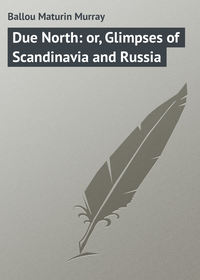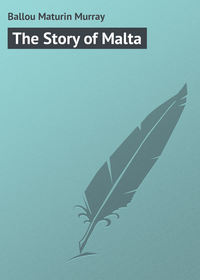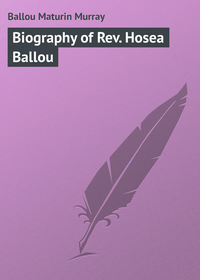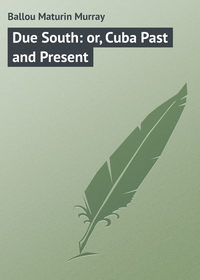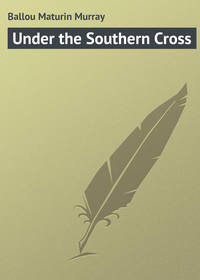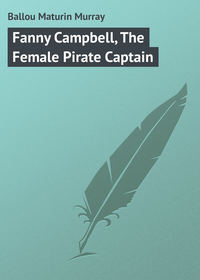 полная версия
полная версияFoot-prints of Travel: or, Journeyings in Many Lands
Victoria is one of the youngest of the colonies, and was, until the discovery of gold fields within her borders, – that is, in 1851, – a portion of New South Wales; but to-day it is the metropolis of Australia. It has not the many natural beauties of Sydney, but it has numerous compensating advantages, and is the real centre of colonial enterprise upon the continent. The admirable system of street-cars in Melbourne is worthy of all praise, use being made of the underground cable and stationary engine as a motor, a mode which is cheap, cleanly, and popular. Collins Street is the fashionable boulevard of the city, though Burke Street nearly rivals it in gay promenaders and elegant shops. But in broad contrast to these bright and cheerful centres, there are in the northeastern section of the town dirty alleys and by-ways that one would think must prove hot-beds of disease and pestilence, especially as Melbourne suffers from want of a good and thorough system of domestic drainage.
The public library of the city is a large and impressive building, standing by itself, a hundred feet back from the street, on rising ground, and would be creditable to any European or American city. It already contains about a hundred and thirty thousand volumes, and is being constantly added to by public and private bequests. The interior arrangements of the library are excellent, affording ample room for books and all needed accommodation for the public. In these respects it is superior to both the Boston and Astor libraries. Under the same roof is a museum containing an extensive collection, especially of geological specimens, mostly of native product.
Melbourne has its Chinese quarter, like Sydney and San Francisco; it is situated in Little Burke Street, just back of the Theatre Royal, and forms a veritable Chinatown, with its idol temples, opium dens, lottery cellars, cafés, low hovels, and kindred establishments. Here, one requires an experienced guide to enable him to make his way safely and understandingly. The peculiar notices posted upon the buildings in Chinese characters are a puzzle to the uninitiated. The signs over the shops are especially original and peculiar; they do not denote the name of the owner, or particularize the business which is carried on within, but are assumed titles of a flowery character, designed to attract the fancy of the customers. Thus: Kong, Meng & Co. means "Bright Light Firm"; Sun Kum Lee & Co. is in English "New Golden Firm"; Kwong Hop signifies "New Agreement Company"; Hi Cheong, "Peace and Prosperity Firm"; Kwong Tu Tye, "Flourishing and Peaceful Company"; and so on.
It is, as a rule, the worst type of the Chinese who leave their native land to make a new home elsewhere, and it is not to be expected that they will be much improved by intercourse with the Australian "larrikins," who are composed of the lowest and most criminal orders. This refuse of humanity is largely made up of the rabble of London and Liverpool, many of whom have had their passages paid by relatives and interested persons at home solely to get rid of them, while others have worked their passage hither to avoid merited punishment for crimes committed in England.
CHAPTER V
The province of Victoria is the special gold-field of Australia, and has produced two-thirds of all the precious metal which statistics credit to the country at large. One of the localities which has proved to be the most prolific in gold is Ballarat, now a charming and populous city, next to Melbourne in importance. It lies nearly a hundred miles north of the capital, at an elevation of fifteen hundred feet above sea-level, and is accessible by railway. This is thought to be the centre of the richest gold-producing district in the world. Beechworth, one hundred and seventy miles northeast of Melbourne, at an elevation higher than that of Ballarat, is nearly as populous, and as prolific in the precious metal. The diggings of Maryborough district, situated a hundred and fifty miles northwest of Melbourne, are famous, and give occupation to some eight thousand miners. Castlemaine, seventy-five miles north of the capital, has proved very profitable in its yield of gold. Nearly forty square miles of gold-bearing lands are being worked by Europeans and Chinese in the district of Ararat, a hundred and fifty miles north of Melbourne. From these several sources of mineral wealth there flows constantly towards the capital a stream of riches, making it probably the greatest gold-producing centre on the globe. There are about fifty thousand people, in all, engaged in gold-mining in the several parts of Victoria, at least ten thousand of whom are Chinese. Still, reliable statistics show that in the aggregate, the corn and wool of this province are alone of more monetary value than is the result from all the gold produced by her mines.
The kangaroos are found in various parts of Victoria, in their wild state. They are usually discovered in the thick woods, sitting upright in circles of a dozen or more, as grave as though engaged in holding a formal council. On such occasions their short forepaws hang limp before them, while their restless heads and delicate ears turn hither and thither in watchful care against surprise. Notwithstanding their huge paunches, big hindquarters, and immense tails, there is something graceful and attractive about these creatures. When they are young they are as playful as kittens. Even when running away from pursuit, – a process performed by enormous leaps, often covering a rod at a flying jump, – there is a certain airy grace and harmony of movement attending their motions. Dogs and horses have more power of endurance than the kangaroo, and are thus enabled to run it down; but neither horse nor dog can achieve the same degree of speed for moderate distances. If the chase occurs in a wood where there are numerous obstacles, like heavy fallen logs, the kangaroo is safe, since he can jump all such impediments without diminishing his speed.
To get a view of the big gum-trees, one visits the Fernshaw Mountain district. We are told of one fallen monarch, which was measured by a government surveyor, having a length upon the ground of four hundred and seventy-four feet. The Pyramid of Cheops is hardly as high as was this tree when it stood erect. The average height of these marvels is from three hundred to four hundred feet. They are situated in a valley protected from winds, and are favorably located to promote their growth, as well as to protect them from sudden gales or tornadoes such as have prostrated large trees in our Yosemite.
The subject of large trees is one of more than ordinary interest; the largest one known in the world is situated in Mascoli, near the base of Mount Etna, on the island of Sicily. It measures one hundred and ninety feet in circumference. It is a chestnut-tree, and still bears fruit in abundance. The oldest tree is believed to be a famous cypress still growing in Oaxaca, Mexico. Humboldt saw it in 1855, when he recorded the measurement as being one hundred and twenty-six feet in circumference and three hundred and eighty-two feet between the out-spread branches. In Nevada, United States, stands what is well known as the "Dead Giant Redwood Tree," which measures one hundred and nineteen feet in circumference, and which is believed to have been growing in the days of Julius Cæsar. Near this mammoth are a dozen other trees, varying in size from seventy-five to one hundred feet in circumference. The "Grizzly Giant," monarch of the Mariposa Grove in California, measures ninety-two feet in circumference. The largest tree in the United States stands near Bear Creek, California, measuring one hundred and forty feet in circumference. It is only by comparison with familiar objects that we can realize these extraordinary dimensions.
We shall be pretty sure to see in the woods of Victoria a most curious example of bird-life and bird-instinct, in the instance of what is known as the bower-bird. This peculiar little creature builds a cunning play-house, a tiny shady bower which it ornaments with vines and highly colored feathers of other birds, besides the yellow blossoms of the wattle-tree and many light-green ferns. In this ingeniously contrived sylvan retreat the feathered architect runs about and holds a sort of carnival, to which others of his tribe gather. Here the little party chirp vigorously, and strut about in a most ludicrous manner.
The glamour of gold-seeking has too much weight in inducing emigration to this region of the South Seas. An industrious and worthy person is sure to make a good living here, and indeed so one might say he would do almost anywhere. He may make a fortune in Australia, but he cannot pick it up, – he must work it up. The gold nuggets which are occasionally found, never amount to much as regards the benefit of the finder. It is upon the whole a fortunate day for the respectable immigrant who has any degree of ability, when he decides to turn his back upon gold-digging, and adopt some more legitimate business. The great elements of success are the same in Australia as in California, Africa, or Massachusetts; namely, steadiness of purpose, application, and temperance.
Sydney is connected with Melbourne by a railway some six hundred miles in length; but the pleasantest way to reach it, either from the north or the south, is by water. We enter the harbor through an opening which is called Sydney Heads, formed by two frowning cliffs on either side of the entrance. Having left the Heads behind, we pass Botany Bay, seven miles below the city, once a penal colony for English convicts, but now a lovely, rural retreat, which retains nothing of its ill-repute but its name. The aspect of the famous harbor, with its lake-like expanse, its many green islands with handsome residences scattered over them, its graceful promontories, and the abundance of semi-tropical vegetation, all together form the loveliest picture imaginable. It may well be the pride of the citizens of Sydney.
Upon landing, we find great irregularity prevailing in the street architecture. George Street is the main thoroughfare, and is two miles in length, containing many stores furnished as well as the average of those in Vienna or Paris. There are fine business edifices, having massive French plate glass windows which are admirably appointed. The peculiar conformation of the town makes the side streets precipitous, so that a large portion of the city is composed of hilly avenues. Like the old streets of Boston, those of Sydney were the growth of chance, and were not originally laid out, like those of Melbourne and Adelaide. Our Washington Street, Boston, was once a cow-path, while the present site of George Street in Sydney was a meandering bullock-track.
This capital, like the two we have already visited in Australia, has a superb botanical garden covering some forty acres of land. The grounds extend on a gradual incline to the shores of the beautiful bay, forming a semicircle round what is known as Farm Cove, a picturesque indentation of the harbor, close to Government House. One special charm of these delightful grounds is the fact that they are accessible by a walk of about five minutes from the centre of the city. It is not necessary to make an excursion in order to reach them, as is the case with many similar resorts, such as Sydenham in London, Central Park, New York, or the Bois de Boulogne, Paris. Here semi-arctic and semi-tropical plants and trees are found growing together, and all parts of the world seem to be liberally represented. The hardy Scotch fir and delicate palm crowd each other; the india-rubber-tree and the laurel are close friends; the California pine and the Florida orange thrive side by side; so with the silvery fern-tree of New Zealand, and the guava of Cuba. China, Japan, India, Africa, Egypt, and South America have all furnished representative trees and shrubs for the beautifying of these comprehensive gardens.
There is here a fine specimen of the Australian musk-tree, which attains a height of nearly twenty feet, and exhales from leaf and bark a peculiar sweet odor, though not at all like what its name indicates. Here we see also the she-oak-tree, which is said to emit a curious wailing sound during the quietest state of the atmosphere, when there is not a breath of wind to move the branches or the leaves. This tree is found growing near the sea in Australia, and is said to have borrowed the murmur of the conch-shell. It has proved to be the inspiring theme of many a local poet. The flowers in this garden are as attractive as the trees; fuchsias, roses, and camellias are in great perfection and variety, flanked by a species of double pansies and a whole army of brilliant tulips. Flowers bloom in every month of the year in this region, out of doors, and are rarely troubled by the frost.
The excellent university of Sydney is admirably situated, and is the first that was founded in the Southern Hemisphere. The city has also its art-gallery, and free public library, with over a hundred thousand volumes. It has also hospitals, churches, and many charitable institutions, with various schools. Sydney holds high rank as a British colonial city, and deservedly so, having special reason for pride in the complete system of her charitable and educational organizations, her noble public buildings, and the general character of her leading citizens. Land in the city and immediate suburbs is held at prices averaging as high as in Boston and New York, and the wealth of the people is represented to be very great in the aggregate.
Australia in its extreme breadth, between Shark's Bay on the west and Sandy Cape on the eastern shore, measures twenty-four hundred miles; and from north to south, – that is, from Cape York to Cape Atway, – it is probably over seventeen, hundred miles in extent. The occupied and improved portions of the country skirt the seacoast on the southern and eastern sides, which are covered with cities, towns, villages, and hamlets. The country occupied for sheep-runs and cattle-ranches is very sparsely inhabited. The reason for this is obvious, since the owner of a hundred thousand sheep requires between two and three hundred thousand acres to feed them properly. The relative proportion as to sheep and land is to allow two and a third acres to each animal.
The great dividing mountain-chain of Australia is near the coast-line in the south and east, averaging perhaps a hundred miles or more from the sea. Nearly all the gold which the land has produced has come from the valleys and hillsides of this range. The gold-diggings of New South Wales have proved to be very rich in some sections; but unlike those of Queensland and Victoria, the precious metal is here found mostly in alluvial deposits.
Many nationalities are represented in Australia and New Zealand, but the majority are English, Scotch, and Irish. The officials of New South Wales especially, look to England for favors which a political separation would cut them off from; among these are honorary titles and crown appointments of a paying nature. The constitution under which the colonies are living is such as to entitle them to be called democracies. In many respects the local government is more liberal and advanced than in England. Church and State, for instance, are here kept quite distinct from each other. As to the legislative power of the colonies, it is seldom interfered with by the home government.
A journey of about five hundred miles northward, either along the coast by steamer, or by railway inland, will take us to Brisbane, the capital of Queensland, which has a population of about fifty thousand. Until 1860 it was an appendage of New South Wales, but was in that year formed into an independent colony. The site of the city is a diversified surface, with the river whose name it bears winding gracefully through it, about twenty-four miles from its mouth; though in a direct line it would be but half that distance to where it empties into Moreton Bay, one of the largest on the coast of Australia. It was discovered by Captain Cook in 1770, and is formed by two long sandy islands running north and south, named respectively Standbroke and Moreton Islands, enclosing between them and the mainland a spacious sheet of water more than thirty miles long and six or eight wide, beautified by fertile islands.
On approaching Brisbane by sea one is puzzled at first to find where the mouth of the river can be, so completely is it hidden by the mangrove swamps which skirt the coast. A pleasant little watering-place is situated close at hand, named Sandgate, which is connected by hourly stages with the city. Several small rivers, all of which, however, are more or less navigable, empty into Moreton Bay, showing that the district inland hereabouts must be well watered. It is less than fifty years since Brisbane was opened to free settlers, having been previously only a penal station for English criminals; but of this taint resting upon the locality, the same may be said as of Sydney, or Hobart, in Tasmania, – scarcely a trace remains.
Queen Street is the principal thoroughfare, and is lined with handsome stores and fine edifices, there being no lack of architectural excellence in either public or private buildings. Like its sister cities, it has a botanical garden, the climate here favoring even a more extensive out-door display of tropical and delicate vegetation than at Melbourne or Sydney. An intelligent spirit of enterprise is evinced by the citizens of Brisbane, and everything goes to show that it is destined to become a populous and prosperous business centre. Its climate, especially, is considered almost perfect. Queensland is very rich in gold-producing mines, but it has also almost endless rolling plains covered with herbage suitable for the support of great herds and flocks, where some fourteen millions of sheep are now yielding meat and wool for export, and where some three millions of cattle are herded. The real greatness of the country is to be found in its agricultural capacity, which is yet to be developed. A very pleasant trip may be enjoyed up the Brisbane River and Bremer Creek, on which latter stream Ipswich is situated. It is twice as far by water as by land, but the sail is delightful, often affording charming views of the city from the river, while at the same time passing suburban residences, flourishing farms, banana-groves, cotton-fields, sugar-plantations, and orange-orchards.
Queensland is more than five times as large as the United Kingdom of Great Britain and Ireland, and it possesses an immense amount of undeveloped resources of the most promising character. The sun shines here with much more tropical ardor than in New South Wales or Victoria. The palm takes the place of the eucalyptus to a certain extent. The tulip-tree, rosewood, sandalwood, and satin-wood, which are not observed further south, greet us here. The aborigines are oftener met than elsewhere, as they prefer to live in a more temperate climate than is found southward, and to be where they can have the country more to themselves. They probably do not number over thirty thousand in all, and are slowly but surely decreasing before the advance of the whites. Even when first discovered they were but a handful of people, so to speak, scattered over an immense territory. They have still no distinct notion of the building of houses in which to live, or at least they adopt none, though they have the example of the whites constantly before them. They are very ugly, having black skins, flat noses, wide nostrils, and deep-sunken eyes wide apart. A bark covering, much ruder than anything which would content an American Indian, forms their only shelter, and they often burrow contentedly under the lee of an overhanging rock or hillside.
The Australian blacks have plenty of legends of the most barbaric character, but by no means void of poetical features. They believe that the earth was created by a being of supreme attributes, whom they call Nourelle, and who lives in the sky. They entertain the idea that because the sun gives heat it needs fuel, and that when it descends below the horizon it procures a fresh supply for its fires. The stars are supposed to be the dwellings of departed chiefs. The serpent is believed to contain the spirit of a real devil. To eat the kidney of an enemy, it is thought by them, imparts to the one who swallows it the strength of the dead man. Any number above five, these blacks express by saying, "it is as the leaves," not to be counted. The white man's locomotive is an imprisoned fire-devil, kept under control by water. The lightning is the angry expression of some enraged god.
The most peculiar weapon possessed by these aborigines is one which originated with them, and is known as the boomerang, – of which every one has heard, but which few have seen. It is a weapon whose characteristics have caused its name to pass into a synonym for anything which turns upon the person who uses it. It seems at first sight to be only a flat, crooked, or curved piece of polished wood, about twenty-eight inches long and three-quarters of an inch in thickness. There is nothing remarkable about this weapon until we see a native throw one. In doing this he carefully poises himself, makes a nice calculation as to distance, raises his arm above his head, and brings it down with a sort of swoop, swiftly launching the curved wood from his hand. At first the boomerang skims along near the ground, then rises four or five feet, but only to sink again, and again to rise. As we carefully watch its course, and suppose it just about to stop in its erratic career, and drop, spent, to the ground, it suddenly ceases its forward flight, and rapidly returns to the thrower. It is thought that no white man can exactly learn the trick of throwing this strange weapon, and certainly few ever care to attempt it a second time.
Ethnologists tell us that these blacks belong to the Ethiopian race, – they are the lowest probably of all the human family. The conviction forces itself upon us that they must be the remnant of some ancient people of whom we have no historic record. When Australia was first taken possession of by the whites, it seems to have been, if the term is in any instance admissible, a God-forsaken land; certainly it was the most destitute of natural productions of any portion of the globe. We can well believe that before these blacks came hither, – perhaps a thousand years ago, – this land was untrodden by human beings.
No species of grain was known to these natives; not a single fruit worthy of notice grew wild, and not an edible root of value was produced. The only game of any size was the kangaroo and a few species of birds. Now, the trees, fruits, vegetables, and game of all regions have become domesticated here, proving to be highly productive, whether transplanted from tropical or from semi-tropical regions.
Queensland measures thirteen hundred miles from north to south, and is about eight hundred miles in width, containing a population at the present time of three hundred and forty thousand. The climate may be compared to that of Madeira, and it is entirely free from the hot winds which sometimes render Sydney and Melbourne so uncomfortable. Leaving out West Australia, which is yet so little developed, the country may be divided thus: Queensland is the best and most extensive grazing section; in this respect New South Wales comes next. South Australia is characterized by its prolific grain-fields, and Victoria is richest in auriferous deposits; but there is gold enough in all of these colonies to afford constant stimulus to mining enterprise, fresh discoveries in this line being made every month. It is proposed to separate the north of Queensland from the south, at the twenty-second parallel of latitude, and to form the northern portion into a separate colony. As Queensland is larger than England, France, and Belgium with Holland and Denmark combined, there can be no want of territory for such a political division: population, however, is needed.
We will now turn our steps southward, by the way of Sydney and Melbourne, to Tasmania. At the last-named city we take a coasting steamer passing down the river Yarra-Yarra, the muddiest of water-ways, until Bass's Strait is reached, across which the course is due-south for a hundred and twenty miles. This is a reach of ocean travel which for boisterousness and discomfort can be said to rival the English Channel, between Calais and Dover. As the coast of Tasmania is approached, a tall lighthouse, one hundred and forty feet above sea-level, first attracts the attention, designating the mouth of the Tamar River. While crossing the Strait we are surrounded by a great variety of sea-birds, among which are the cape-pigeon, the stormy petrel, and the gannet, which last is the largest of ocean birds next to the albatross.


